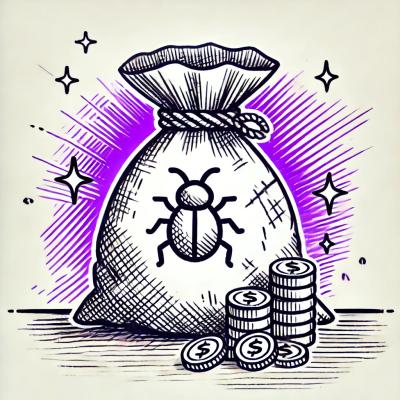
Research
Security News
Malicious npm Packages Use Telegram to Exfiltrate BullX Credentials
Socket uncovers an npm Trojan stealing crypto wallets and BullX credentials via obfuscated code and Telegram exfiltration.
Gremlin.Net for Apache TinkerPop™ is a language variant and driver for .NET. Apache TinkerPop™ is a graph computing framework for both graph databases (OLTP) and graph analytic systems (OLAP). Gremlin is the graph traversal language of TinkerPop. It can be described as a functional, data-flow language that enables users to succinctly express complex traversals on (or queries of) their application's property graph. Gremlin.Net implements Gremlin within .NET. C# syntax has the same constructs as Java including "dot notation" for function chaining (a.b.c), round bracket function arguments (a(b,c)), and support for global namespaces (a(b()) vs a(__.b())). As such, anyone familiar with Gremlin-Java will immediately be able to work with Gremlin.Net. Moreover, there are a few added constructs to Gremlin.Net that make traversals a bit more succinct. Gremlin.Net is designed to connect to a "server" that is hosting a TinkerPop-enabled graph system. That "server" could be Gremlin Server https://tinkerpop.apache.org/docs/current/reference/#gremlin-server or a remote graph provider that exposes protocols by which Gremlin.Net can connect. Please see the Reference Documentation of Apache TinkerPop for more information on usage: https://tinkerpop.apache.org/docs/current/reference and use our Google Group gremlin-users if there are any questions: https://s.apache.org/c8hru The Gremlin language allows users to write highly expressive graph traversals and has a broad list of functions that cover a wide body of features. The Reference Documentation describes these functions and other aspects of the TinkerPop ecosystem including some specifics on Gremlin in .NET itself: https://s.apache.org/pgbwu Most of the examples found in the documentation use Groovy language syntax in the Gremlin Console. For the most part, these examples should generally translate to C# with some logical modification: https://s.apache.org/10v91 Given the strong correspondence between canonical Gremlin in Java and its variants like C#, there is a limited amount of C#-specific documentation and examples. This strong correspondence among variants ensures that the general Gremlin reference documentation is applicable to all variants and that users moving between development languages can easily adopt the Gremlin variant for that language. NOTE that versions suffixed with "-rc" are considered release candidates (i.e. pre-alpha, alpha, beta, etc.) and thus for early testing purposes only.
FAQs
Gremlin.Net for Apache TinkerPop™ is a language variant and driver for .NET. Apache TinkerPop™ is a graph computing framework for both graph databases (OLTP) and graph analytic systems (OLAP). Gremlin is the graph traversal language of TinkerPop. It can be described as a functional, data-flow language that enables users to succinctly express complex traversals on (or queries of) their application's property graph. Gremlin.Net implements Gremlin within .NET. C# syntax has the same constructs as Java including "dot notation" for function chaining (a.b.c), round bracket function arguments (a(b,c)), and support for global namespaces (a(b()) vs a(__.b())). As such, anyone familiar with Gremlin-Java will immediately be able to work with Gremlin.Net. Moreover, there are a few added constructs to Gremlin.Net that make traversals a bit more succinct. Gremlin.Net is designed to connect to a "server" that is hosting a TinkerPop-enabled graph system. That "server" could be Gremlin Server https://tinkerpop.apache.org/docs/current/reference/#gremlin-server or a remote graph provider that exposes protocols by which Gremlin.Net can connect. Please see the Reference Documentation of Apache TinkerPop for more information on usage: https://tinkerpop.apache.org/docs/current/reference and use our Google Group gremlin-users if there are any questions: https://s.apache.org/c8hru The Gremlin language allows users to write highly expressive graph traversals and has a broad list of functions that cover a wide body of features. The Reference Documentation describes these functions and other aspects of the TinkerPop ecosystem including some specifics on Gremlin in .NET itself: https://s.apache.org/pgbwu Most of the examples found in the documentation use Groovy language syntax in the Gremlin Console. For the most part, these examples should generally translate to C# with some logical modification: https://s.apache.org/10v91 Given the strong correspondence between canonical Gremlin in Java and its variants like C#, there is a limited amount of C#-specific documentation and examples. This strong correspondence among variants ensures that the general Gremlin reference documentation is applicable to all variants and that users moving between development languages can easily adopt the Gremlin variant for that language. NOTE that versions suffixed with "-rc" are considered release candidates (i.e. pre-alpha, alpha, beta, etc.) and thus for early testing purposes only.
We found that gremlin.net demonstrated a healthy version release cadence and project activity because the last version was released less than a year ago. It has 8 open source maintainers collaborating on the project.
Did you know?

Socket for GitHub automatically highlights issues in each pull request and monitors the health of all your open source dependencies. Discover the contents of your packages and block harmful activity before you install or update your dependencies.

Research
Security News
Socket uncovers an npm Trojan stealing crypto wallets and BullX credentials via obfuscated code and Telegram exfiltration.

Research
Security News
Malicious npm packages posing as developer tools target macOS Cursor IDE users, stealing credentials and modifying files to gain persistent backdoor access.

Security News
AI-generated slop reports are making bug bounty triage harder, wasting maintainer time, and straining trust in vulnerability disclosure programs.